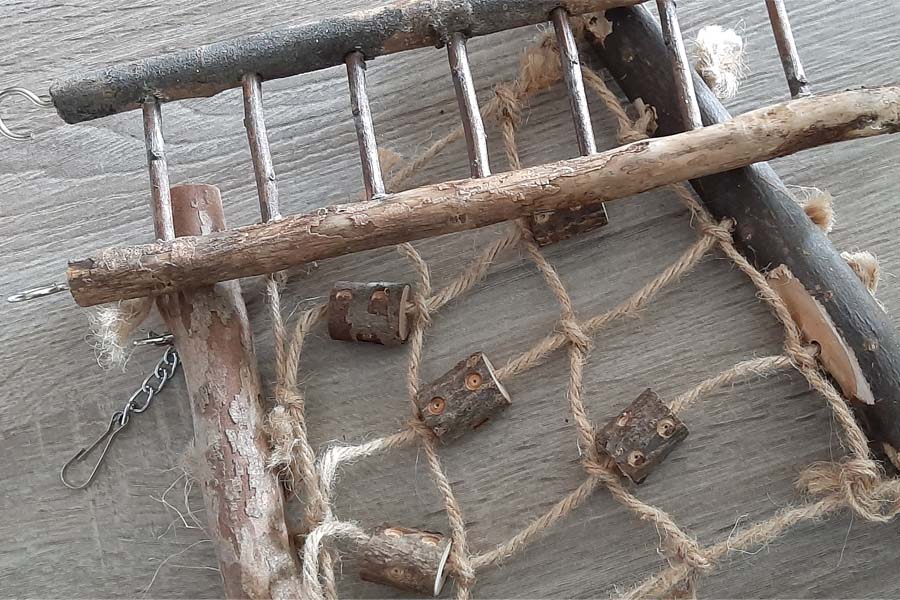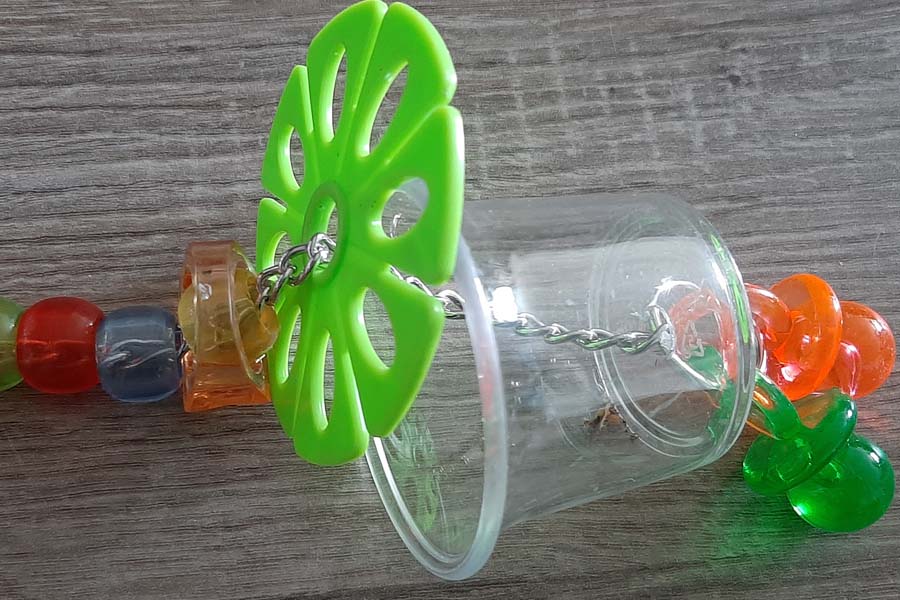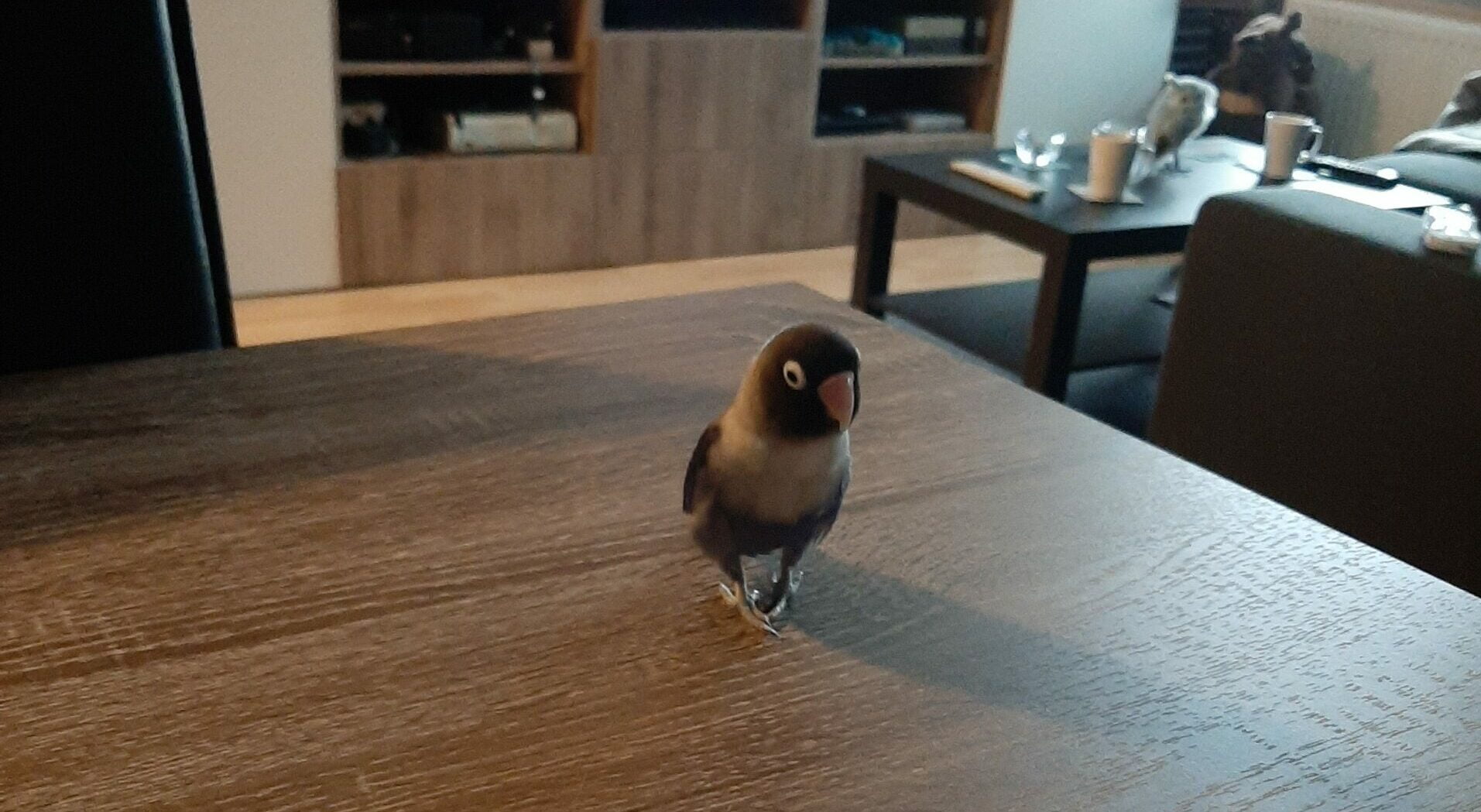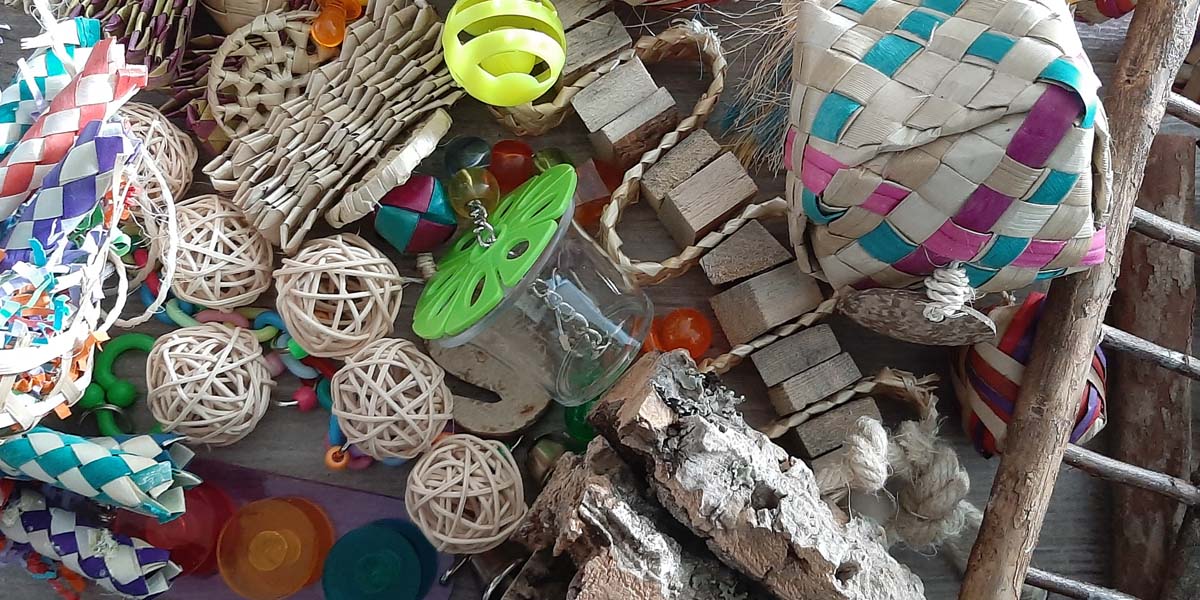What type of bird toys does a lovebird need?
Just like every other parrot, a lovebird needs toys to entertain themselves. If not, they will get bored, which can cause issues like feather plucking. Always provide your lovebird with exercise toys, balance toys, shredding toys, chew toys and foraging toys. Add preening toys if your bird tends to over-preen and feather pluck, add preening toys. Also look at what type of toy and material your bird enjoys the most. I give my lovebird rope based toys or palm leaf shredding toys as she really enjoys those the most.
To enrich their lives even more you could also give your lovebird noise toys, puzzles and foot toys.
The importance of foraging toys
In the wild, lovebirds need to work for their food. However, your pet has its food served on a silver platter. Foraging toys will provide your lovebird with the natural behavior of searching for their food.
Not every bird naturally will understand what a foraging toy does. When giving your lovebird a foraging toy for the first time, let them see you put food in it. Another way is to make the treat easily visible the first time they use the toy. When your lovebird understands that there is food inside it, you can hide it better so they need to work harder for it.
Foraging toys come in all shapes, sizes and material. Reusable foraging toys are usually made of acrylic, bird safe rubber or stainless steel.
Then there is also the chewable foraging toy. This can be made from paper, palm leaves or cardboard. You lovebird must chew through the material to get to their prize.

Shredding toys to mimic natural behavior
Shredding toys are great stress relievers for your lovebird. There is nothing more fun for them than destroying something. They sometimes shred it faster than you can replace the toy. Shreddable toys are therefore a perfect thing to make yourself, using paper and bird safe rope.
Lovebirds shred their toys to mimic natural behavior. In the wild they need to chew away foliage to get to their food. Therefore combining a shreddable toy with some food inside it mimics their natural behavior even better. Making it a perfect foraging toy as well.
A shredding toy can be made from (soft) wood, rope, cardboard or natural materials such as palm leaves.


Chewing toys for a well-trimmed beak
Lovebird’s love chewing on things. It’s their natural behavior to chew and it also helps to keep their beak trimmed and in great condition.
Chew toys are made of a harder material than shredding toys, but still can be destroyed to pieces. By providing your bird with chew toys which they can break apart and put their beaks to the test, you will keep your bird from destroying things they aren’t allowed to destroy.
A chew toy can be made from harder woods, calcium, or cuttlebone. You lovebird will also often chew on their perches. I recommend using hard wood for perches and softer wood for things they are allowed to destroy.

Keep your lovebird healthy with exercise and balance toys
Your lovebird might spend a lot of their time in their cage. It won’t be able to fly around as much as it would in its natural habitat. To keep your lovebird on a healthy weight either give it plenty of time outside or invest in exercise toys.
Many of these exercise toys will also help your bird with balance. A bird uses a lot of its muscles to balance itself on something that is swinging around.
Good exercise toys are ladders and ropes. Your lovebird will love climbing on them. These toys will exercise the back muscles as well as the muscles in their feet and legs. A cage with diagonal bars will also help here.
For good balancing toys that will help build wing and chest muscles, add swings or bungee ropes.

Foot toys for coordination and dexterity
Foot toys are exercise toys specifically for training the feet of your lovebird. Often your bird will also use its beak to play with it. This toy type helps your lovebird with coordination and its dexterity which is required to make a good landing after flying.
A foot toy is generally small, so your bird can pick it up with its feet or easily throw around with its beak. While a lovebird might not pick up toys with its feet as often as its bigger cousins, it is still a great toy to have.
Foot toys don’t have to be at the bottom of the cage. You can place them in a bowl higher up in the cage or on a ladder. When your bird passes it will probably throw it down and watch it for a while (at least that is what my lovebird loves to do).

No over-preening or feather plucking with preening toys
You will see your lovebird preening their feathers to keep them in good condition. Some birds however will over-preen, pulling out their feathers. This behavior can be a result of stress or boredom.
To avoid this, add some preening toys to your lovebird’s cage. A preening toy can be made from different materials and usually frays easily. Each bird has its own preference to what it likes to preen on for example my lovebird likes sisal rope.
Keep an eye on the preening toys though. Your bird shouldn’t be able to get entangled in it. If it does, remove it. You can either change aspects of the toys so your bird doesn’t get stuck on it anymore or replace it entirely.


Puzzles to keep the mind sharp
Lovebirds are extremely curious and intelligent. Puzzle toys can help your bird think about what it needs to do to get to the food. Because food is everything.
They come in all shapes, sizes, and colors. There are puzzle toys you can place in your bird’s cage. For example, a toy that rotates in a certain order for your bird to get the reward.
Others are for you to do together with your lovebird. Like putting a green coin in the green box and you give your bird a reward afterwards.

No more silence with noisy toys
Lovebirds aren’t exactly silent. They love making lots of noise. They also love bells. Ringing it… or sticking their head in it to wear it as a hat. You can add one or two bells to their cage if you don’t mind the noise. Many foot toys also have bells in them.






